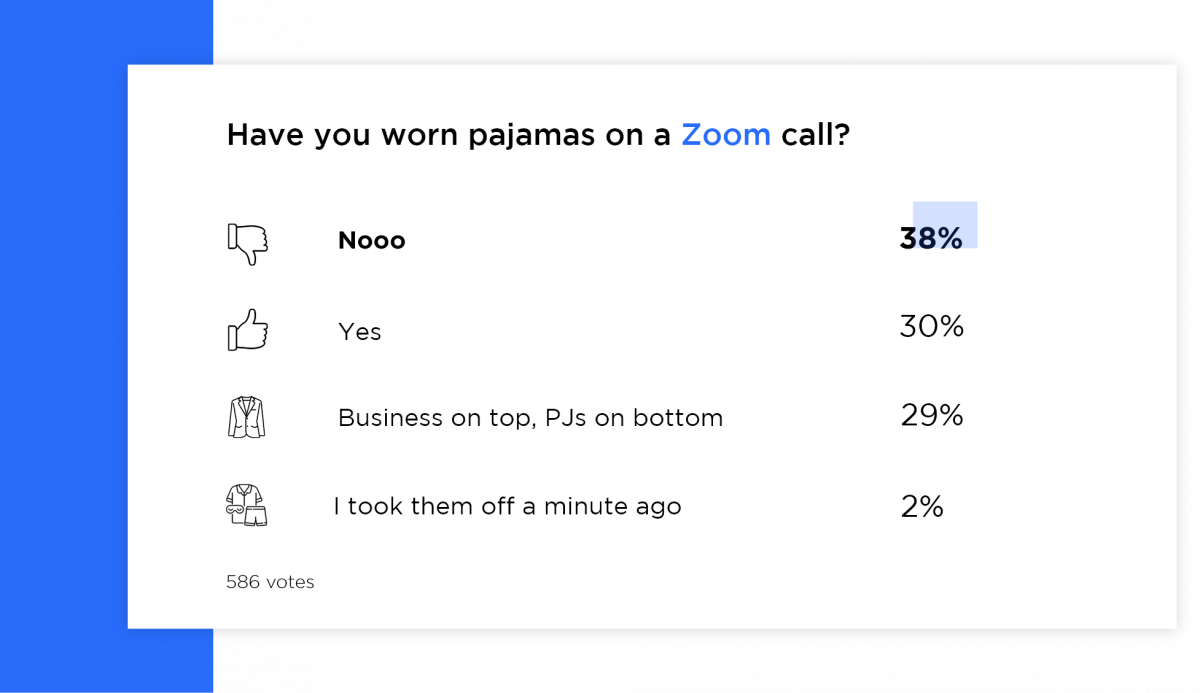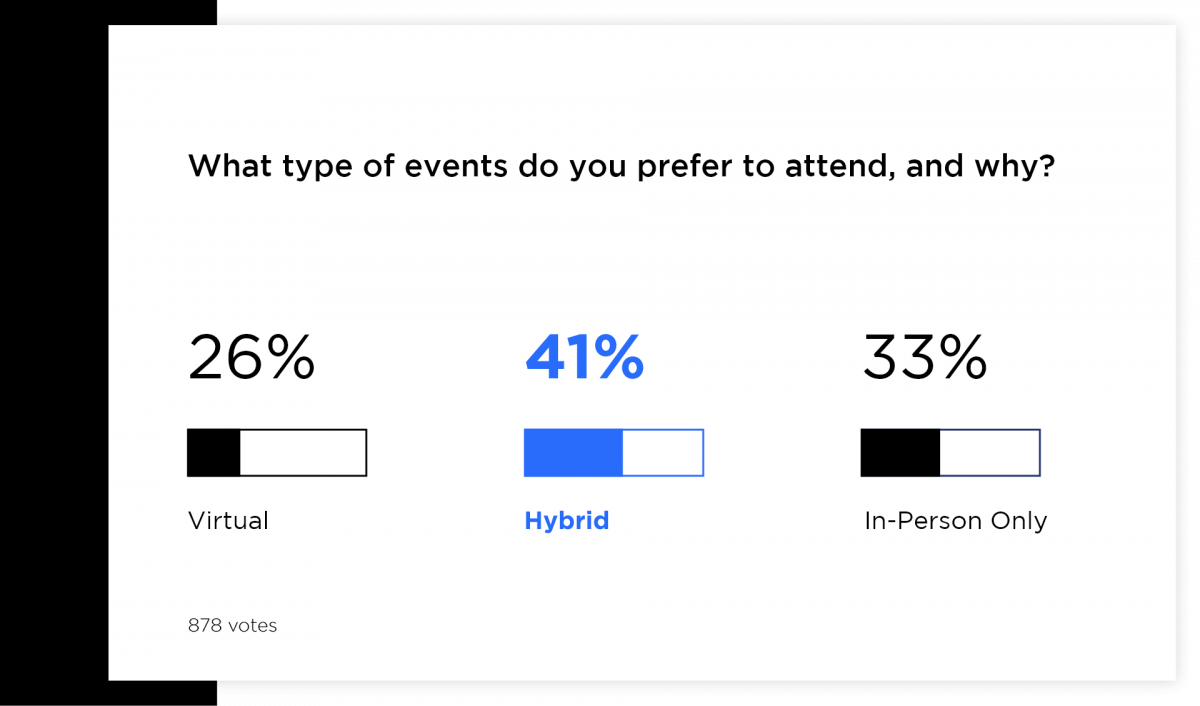How we handle communication is how we succeed.
That’s the reason why for this Motion Software’s All-Remote report, we aimed to learn in detail about the current state of virtual meetings in Q1 2022.
Our marketing team gathered insights from LinkedIn polls with over 100 votes publicly shared by leading remote work advocates over the past 5 months.
The Report
Over the past two years organizations have all stumbled upon countless surveys, reports and data about how remote work has changed the lives of so many. Communication was challenged the most by the pandemic. Virtual meetings became the norm – figures show:
– Four in five home workers now attend more meetings than they did in the office (Source: McKinsey)
– The number of annual Zoom meeting minutes is over 3.3 trillion. (Source: Backlinko)
Virtual Communication
World has already gotten accustomed to virtual meetings. And we all feel a certain kind of way about them. Most of the time it’s as if people think more about the small mundane aspects of it instead of the actual quality and content of the meeting. For example, how many times have you had a dispute over whether everyone’s camera should be on?
 LinkedIn poll by Brigette Hyancinth
LinkedIn poll by Brigette Hyancinth
By the looks of it, LinkedIn users seem divided with 45% of respondents choosing the “it depends” option. And it really does. For example, if you are communicating with your closest team members it’s not such a big deal if you have your camera off sometimes.
However, if you have a video call with a new client that you haven’t met personally, it could be considered rude if your camera is not on. Seeing the person’s face at such a meeting is humanizing and creates trust.
It all comes down to the specifics of each call, the formality of the meeting, the participants and the agenda. We can’t always rely on common sense. To avoid potentially embarrassing moments, it’s a good idea to get acquainted with a more widely accepted remote meetings etiquette.
These results might also have to do with the fact that 30% of this poll’s respondents are guilty of this:
 LinkedIn poll by Christopher Rainey
LinkedIn poll by Christopher Rainey
Being in your PJs while working every once in a while is probably fine. However, some remote work advocates are concerned that doing so for extended periods of time (months or even years) could affect one’s productivity, sleep patterns and even mental health. It turns out getting dressed is more important than we think. This has been confirmed by a study conducted by the Medical Journal of Australia.
What to improve?
Communicating regularly and effectively is vital. And yet it seems like “having less meetings” is desired by many. To further intensify this it almost ranks first as the one thing that could improve and make your every-day work life easier.
 LinkedIn poll by Iwo Szapar
LinkedIn poll by Iwo Szapar
The impact of meeting-free days has recently been studied by MIT Sloan. They have found that nearly half of the surveyed companies have reduced meetings by 40% and have introduced 2 no-meeting days per week. This resulted in a 71% increase in productivity and 58% increase in satisfaction.
This means that having many meetings does not equal effective communication. Having fewer but better thought-out meetings seems to be the way to go as they provide your team with autonomy without interrupting their most productive hours.
Remote Events
Virtual events are here to stay. According to Kaltura’s State of Virtual Events Survey, 92% of organizers have shifted to virtual events in 2021, 94% are planning for virtual events in 2022, and 48% plan to increase the number of virtual events they host. Some of the key benefits chosen by organizers are more registrations and a better ROI.
Sometimes, what we feel and what works best for a particular occasion might not coincide. Seeing the speaker’s face is so much more impactful. On the other hand, if you are speaking at a virtual event, seeing your face on the screen has been described as distracting by most voters in Hoyin Cheung’s poll:

LinkedIn poll by Hoyin Cheung
Two of the main drawbacks of virtual events are the inability to socialize (44%) and difficulties networking (35%). Increased attention to online communication tools could help ease those pains.
The world’s 2-year long experience with virtual events has provided us with more interesting data:
 LinkedIn poll by Hoyin Cheun
LinkedIn poll by Hoyin Cheun
If there’s one thing we can point out as the biggest challenge when it comes to virtual events – it’s keeping the audience engaged. The results below confirm that point:

LinkedIn poll by Iwo Szapar
Virtual job fairs
What comes as a surprise in the event world is that despite the explosion of virtual job interviews and remote onboarding, virtual job fairs remain largely unpopular.

LinkedIn poll by Hoyin Cheung
The growing feeling that hybrid work, hybrid events and hybrid everything is the perfect middle ground and the true future of work has been gaining momentum the entire 2021 and continues into 2022.
According to Kaltura’s Virtual Events Survey, 67% are going for a hybrid event strategy in 2022.
To wrap it all up, we would also like to look at the most frequently asked question of all:

LinkedIn poll by Brigette Hyancinth
Hybrid it is.
However, which version of it? Hybrid has many dimensions. The Pulse of the American Worker Survey found that:
- 87% of people want to work from home at least 1 day of the week
- 68% of American workers say the ability to work remotely and on-site is the perfect work model
On the other hand, 48% of responders want to work from home permanently, while the remaining 44% want to work from home part of the week. This goes to say that the hybrid model isn’t a one size fits all solution and has to be addressed individually.
Make sure to check out our “How to make the hybrid work model a success for your company?” article.
Why LinkedIn?
We did choose LinkedIn as the world’s largest professional network on the internet. At the moment, 46% of the companies’ page social traffic comes from LinkedIn (Source: HubSpot). Moreover, the report shows that LinkedIn has the highest visitor-to-lead conversion with 2.74%. That is almost 3 times higher than Twitter with 0.69% and Facebook with 0.77%.
LinkedIn data has rarely been analyzed and looked at as a work trend indicator. However, we feel like it intensifies what we’ve all been thinking.